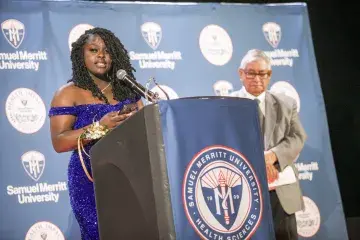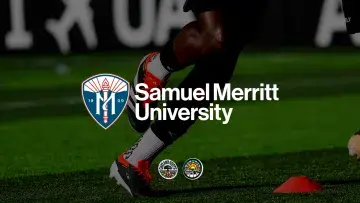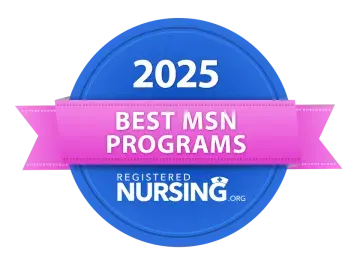SMU Demonstrates Value of Teamwork at Stanford Conference
It was a tragic scene: A 12-year-old boy was declared brain dead after being struck by a car and his parents had to decide at the hospital whether to donate his organs.
The doctor and nurse who led the discussion showed empathy and spoke carefully, but their advice to the parents was contradictory.
While the doctor pressed to harvest immediately, the nurse said it was premature because she was unaware of the boy’s irreversible status.
Their dispute compounded the parents’ grief and left the couple traumatized – this time by healthcare professionals.
Unfortunately, this kind of miscommunication unfolds too often in hospitals.
Luckily, this time, the simulated scenario took place in a classroom at the prestigious Stanford Medicine X Ed Conference on April 22, when a team from Samuel Merritt University (SMU) presented a 45-minute workshop designed to improve healthcare communication.
Titled “Using Simulation for Inter-Professional Education (IPE) in Patient Safety and Communication,” the workshop introduced SMU’s cutting-edge work to integrate IPE and simulated-based learning to an audience of national and international leaders in healthcare education.
“At SMU, we’re doing incredibly important work across our programs highlighting the value of team collaboration,” said Associate Professor Amin Azzam. “This workshop showcases how we’re leading the field though the use of simulation as an educational strategy towards achieving that goal.”
After the simulation portion of the workshop concluded, observers and participants debriefed their experiences – a critical piece of the learning process.
For BSN student Sophie Blackburn, who played the role of the nurse, the experience underscored key concepts that will better prepare her for real-life scenarios.
“No matter which side of the simulation I'm on (actor or student), I learn something new I can take with me to my practice each and every time,” Blackburn said. “Simulation is a safe place for me to make mistakes, feel the pressure of a critical situation, and try new things outside of the hospital setting.”
Stanford Medicine X Ed is a conference dedicated to “the future of medical education at the intersections of people, technology and design,” and it promotes a philosophy that such education will benefit all relevant healthcare stakeholders.
“This conference and its attendees mirror many of the values and beliefs we hold dear at SMU, and it was quite a privilege to deliver this workshop to a group of such like-minded individuals,” said Mike Negrete, assistant vice president of academic affairs.
The SMU team also included Simulation Technology Specialist Kam McCowan and Associate Professor MSN Family Nurse Practitioner Teri Gwin.


